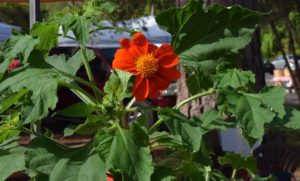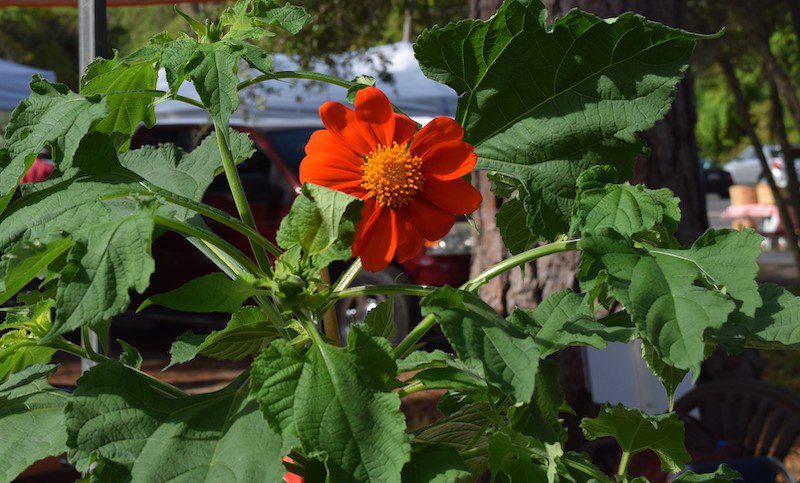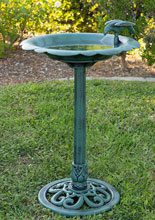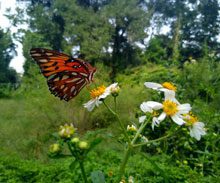
Mexican Sunflower
For the coastal south, planting dates are very important. Most gardeners want to get out to till and prepare the soil as soon as the days start getting longer, and the air temperatures warm up. It is fine to plant some crops in January and February for early spring harvest. Peas, carrots, greens, onions, and maybe Irish potatoes can go in when soil temperatures are cold, but our warm season vegetables, herbs, and flowers may not germinate well until the soil is above 60ºF. Squash, tomatoes, cucumbers, and peppers need warmer temperatures to grow. A soil thermometer is not a bad investment for the anxious gardener.
Some things that can be grown a little later are beans, field peas, okra, pumpkins, sweet potatoes, and melons. These fruits and vegetables like it hot. You can also hedge your bets on the basil, flowers, peppers, and eggplant by planting them in succession.
Have you ever grown field peas, butter peas, crowder peas, or black -eyed peas? They are easy peas-y. Legumes are excellent to grow as a cover crop to improve the soil, converting atmospheric nitrogen into a useable fertilizer. If you plant them thickly they can crowd out pesky weeds, have nice flowers, many are drought tolerant, and you get peas to shell and eat. This year I am planning to grow some Edamame. The pods are very cool, and my seed catalogue says that “All plants grow well with soybeans.”
Don’t forget the herbs and flowers. Your pollinators will thank you, and your neighbors will be delighted. One of the ornamental ancient grains is Amaranth. One catalogue offers four different species. All of them are tall and ornamental, growing over 5 feet. The young leaves can be harvested for salads or garnish, and the grains can be toasted, or ground into flour. Flowerheads are red, golden yellow, or black. Mediterranean herbs like it hot and dry. Most of them are going to offer more flavor if they are allowed to grow without a lot of fertilizer or irrigation. Basil is a good companion for your tomatoes and the African blue basil is a pollinator magnet. Grow some dill and parsley for you and the caterpillars. Blue borage is another annual that is a bee favorite. Mints and salvias are right up there at the top for them too with their tubular flowers loaded with nectar.
Flowers that can really take the heat are members of the Daisy family like marigolds, zinnias, cosmos, and sunflowers. Blanket flower Gaillardia spp. can and does grow in sand dunes at the beach, so we know it likes heat and tolerates drought too. Nasturtiums come in warm colors like orange, yellow, and red enjoy a sunny window box or flower bed to grow the cheerful and edible flowers and leaves. They are easy to grow from seed. I also planted one of my favorite blue flowers this spring and can’t wait for them to bloom. The scientific name is Nigella damascene: love-in-a-mist; it is a favorite cottage garden flower that will grow in any vacant garden spot and hopefully will re-seed its lovely self.
My best advice to myself and others is the seeds in the package don’t grow unless you plant them. Enjoy your late season garden!
For Spring and Fall planting dates and other great information on gardening visit:
https://hgic.clemson.edu/factsheet/planning-a-garden/








